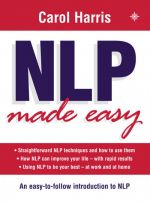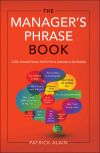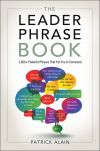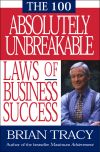Правообладателям!
Представленный фрагмент книги размещен по согласованию с распространителем легального контента ООО "ЛитРес" (не более 20% исходного текста). Если вы считаете, что размещение материала нарушает ваши или чьи-либо права, то сообщите нам об этом.Читателям!
Оплатили, но не знаете что делать дальше?
Текст бизнес-книги "NLP Made Easy"
Автор книги: Carol Harris
Раздел: Жанр неизвестен
Текущая страница: 1 (всего у книги 4 страниц)

Carol Harris
NLP
made easy
An easy-to-follow introduction to NLP

Contents
Cover
Title Page
Preface
Finding your Way around this Book
Section One
1. What is Neuro-Linguistic Programming?
2. The History of NLP
3. Frameworks, Models and Techniques
Section Two
4. Personal Growth
5. Social Relationships
6. Work and Business
Appendices
Further Information
Training in NLP
Contact with Others Involved in NLP
Glossary of NLP Terms
Bibliography and Other Resources
Useful Contact Details
Index
Acknowledgements
About the Author
Copyright
About the Publisher
Preface
My first encounter with NLP was reading the book which many other people had also acquired as their primer – Frogs into Princes. This book was both fascinating and confusing; it left many questions unanswered, as it was as a transcript of training rather than a stand-alone publication. However, for me, it was the impetus to further study and led to my professional life having a major focus on NLP.
If this book adds to the store of available knowledge on the subject of NLP, I hope it does so utilizing two concepts which have been important to me personally: structure and simplicity. I have aimed to make the book as straightforward as is possible; I have also aimed to use a structure which is easy to follow and where specific items can be pursued without having to wade through irrelevancies and jargon.
I would like to suggest a key in reading this book – and that is curiosity. Curiosity has long been a cornerstone of NLP. Attitudes of curiosity and exploration have led to the major developments which established NLP as a field in its own right and it is those same attitudes which continue to inform its progress. I would encourage you to approach each section of the book with these attitudes. Once you have read the book, it would be excellent if you could take the attitudes of curiosity and exploration forward into your life, extending your own personal search for knowledge, experience and creativity.
Finding your Way around this Book
Welcome to NLP Made Easy. There are many books on NLP, but what I have aimed at here is to provide a structured guide to the various elements of the topic. For the first time, there is a history of NLP in the UK; most published material has been based on the early origins of NLP in the United States, but it has a sound base in the UK, which deserves to be recorded. For this part of the book I am indebted to the writers who have submitted articles to Rapport (the magazine of the Association for Neuro-Linguistic Programming, of which I am the editor), giving their thoughts on the early days of NLP in the UK. I have also aimed to give a rather more detailed explanation of some of the NLP terms than is generally found in book glossaries. NLP can be very jargon-filled, which is perhaps understandable, given its history, but it can easily be practised without the use of complex terminology. However, given that that terminology is part of the inheritance of NLP, in the last section of the book I have provided some simple examples which I hope flesh out the basic terms in an understandable way.
The book is in three main parts:
 Section One is about the origins and development of NLP and contains information on its history, notable people involved in its early development, and models, frameworks and techniques associated with it.
Section One is about the origins and development of NLP and contains information on its history, notable people involved in its early development, and models, frameworks and techniques associated with it.
 Section Two is about how you can apply NLP in your own life. This section includes three broad areas: personal growth, social relationships and business situations.
Section Two is about how you can apply NLP in your own life. This section includes three broad areas: personal growth, social relationships and business situations.
 The appendices outline practical steps you can take if you wish to find out more about NLP, make use of the services of NLP-trained practitioners or pursue professional training in NLP yourself.
The appendices outline practical steps you can take if you wish to find out more about NLP, make use of the services of NLP-trained practitioners or pursue professional training in NLP yourself.
Each section has a brief introduction, outlining what is included and giving an overview of the topics covered. A more detailed explanation then follows.
The book can be read in a variety of ways, as each part has been designed to stand alone as well as to integrate with the rest of the book. You can choose to read it from start to finish, or you can select those sections which interest you most. If you prefer, you can look at the applications chapters first and then go back to read about the origins. A few topics are mentioned in more than one part of the book; this is intended to make the various sections as self-contained as possible.
NLP is very grounded in experience and I recommend that you take the time to do some of the exercises and activities. This will make the subject more real for you and give you a feel for how NLP actually works in practice. You might find it helpful to work through some of the exercises with another person and might also like to create a personal action plan, which will help you bring what you learn into everyday use.
I hope you enjoy finding out about this fascinating subject which has made a tremendous impact on so many people’s lives.
Section One
This part of the book is about the history and development of NLP. Chapter 1 begins with some definitions of NLP and then goes on to put NLP in the broader context of developmental techniques. Chapter 2 covers the history of NLP and the contribution made by some of the notable figures in the NLP world. Chapter 3 introduces some of the best-known NLP frameworks, models and techniques.
Because NLP is continuously growing and developing, this section gives only a snapshot taken at the present time; five or ten years from now there will, no doubt, be further changes and innovations. If you are seriously interested in NLP, it is worth keeping up with its development and the appendices give you some ideas on how you can do that.
Chapter 1
What is Neuro-Linguistic Programming?
This chapter introduces you to Neuro-Linguistic Programming (NLP) and gives an outline of where it originated, what it covers and how it works, together with some of its links with other disciplines. It also considers popular misconceptions about NLP and gives a brief guide to ongoing developments in the field.
You probably already ‘do’ NLP and are likely to know a good deal about some of its approaches. This is because NLP has its roots in real-life behaviour, rather than in theory and research. NLP is about how people become successful at things; how they achieve what they aim for and enhance their lives. NLP encompasses a wide variety of processes and techniques, and has an overriding emphasis and approach – that of curiosity, exploration and action. NLP can offer you many things, but it helps if you are willing to be adventurous, open to change and fascinated by life and all that it brings.
NLP’s main aim is to help people get better at what they do. Its focus on performance has a number of principles, some of which are as follows:
 Excellence in performance can be modelled (analysed) and transferred from one person to another.
Excellence in performance can be modelled (analysed) and transferred from one person to another.
 High performance requires both the development of skills and development of corresponding mental and physical states.
High performance requires both the development of skills and development of corresponding mental and physical states.
 Mental and physical states can be broken down into small measurable elements and modified to achieve desired results.
Mental and physical states can be broken down into small measurable elements and modified to achieve desired results.
What distinguishes NLP from many other disciplines is its focus on modelling (see Chapter 3). Briefly, modelling is the elicitation of sets of patterns; in NLP, patterns which demonstrate how people achieve excellence in performance. These patterns can be copied by others in order to replicate the achievements of high performers. Characteristic features of NLP are its specific techniques for analysing the components of performance, especially how the mind processes information and installs strategies for achievement. It can do this across all areas of personal and professional performance, including motivation, learning, maintaining good health, sports performance, communication, negotiating, public speaking, teambuilding and change management.
NLP’s processes of modelling are distinct from NLP’s applications (for example techniques for enhancing sales, negotiating, teaching and so forth). Many people believe that NLP is its techniques, but the techniques are simply a minor part of a field of study which is, in essence, a holistic and systemic approach to understanding personal and organizational effectiveness.
Richard Bandler, a co-founder of NLP, has been quoted as saying that, to master NLP, it is necessary to ‘let it completely permeate your thinking and feeling’ and that it involves ‘a ferocious spirit of “going for it” – characteristics of “excitement,” “curiosity,” “high level state management of your own moods,” “passion” and “commitment”’ (Michael L. Hall, The Spirit of NLP, The Anglo-American Book Co Ltd, 1996). John Grinder, another co-founder of NLP, says that people wanting to train or represent NLP in any way ‘need to possess qualities of personal congruity, sparkling intelligence, a deep bottomless curiosity, a driving desire to discover new patterning, a phobic class response to repeating themselves, a continuous scanning for evidence that they are mistaken in every aspect of their personal and professional beliefs, solid personal ethics, physical fitness, actual real world experience in any field in which they intend to present NLP and an excellent sense of humour’ (Internet interview – Inspirative 1996).
NLP provides ways of helping anyone become more competent at what they do, more in control of their thoughts, feelings and actions, more positive in their approach to life and better able to achieve results. If people do not have, within themselves, the knowledge or resources to achieve what they want, NLP makes it possible for them to adapt other people’s skills and ways of thinking and incorporate them within their own lives in order to be more successful. NLP is, as one definition has succinctly put it, ‘the Art and Science of Excellence’.
Definitions
Because of its nature, different people perceive different things in NLP and gain different things from it; definitions of NLP, therefore, are numerous and varied. As well as the one given above, they have included the following:
 ‘an attitude which is an insatiable curiosity about human beings with a methodology that leaves behind it a trail of techniques’ (Richard Bandler)
‘an attitude which is an insatiable curiosity about human beings with a methodology that leaves behind it a trail of techniques’ (Richard Bandler)
 ‘an owner’s guide to the mind’
‘an owner’s guide to the mind’
 ‘the study of subjective experience’
‘the study of subjective experience’
 ‘the study of the structure of subjectivity’ (Dilts, Bandler, Grinder, DeLozier, Neuro-Linguistic Programming: Volume 1)
‘the study of the structure of subjectivity’ (Dilts, Bandler, Grinder, DeLozier, Neuro-Linguistic Programming: Volume 1)
 ‘software for the brain’
‘software for the brain’
 ‘a new Science of Achievement’
‘a new Science of Achievement’
 ‘the study of human excellence’
‘the study of human excellence’
 ‘the ability to be your best more often’
‘the ability to be your best more often’
 ‘the science that teaches how to use the neurological and linguistic resources in order to follow the program of self preservation, health and happiness in union with other people and nature’ (Luis Jorge Gonzales)
‘the science that teaches how to use the neurological and linguistic resources in order to follow the program of self preservation, health and happiness in union with other people and nature’ (Luis Jorge Gonzales)
 ‘a manual for the structured use of creativity’ (Roz Carroll)
‘a manual for the structured use of creativity’ (Roz Carroll)
 ‘how to think positively so you can enhance your performance’
‘how to think positively so you can enhance your performance’
 ‘an adventure in experience’
‘an adventure in experience’
As most of these definitions focus on personal improvement, one way of thinking of NLP is to consider it as providing a way of helping people move from situations which could be improved to situations which are better. Whereas other disciplines, such as psychology, give insights into human behaviour and motivation, NLP actually provides practical ways of improving performance. So it incorporates a technology for bringing about change in people, a set of approaches and tools which combine to offer ideas and skills for enhancing how people do things.
This can be summed up by saying that NLP helps people identify their present states (how they think and feel, what they do and the results they achieve), consider their desired states (what they would really like instead) and learn how to move from one to the other. It is not prescriptive about what the desired states should be, leaving that to the individual. For example, two people might both wish to become better at responding to other people’s criticism. The first person might become upset when criticized (their ‘present state’) and wish to ‘be able to accept criticism in a positive way’, while the second person might become defensive when criticized and wish to ‘be able to be receptive and use the criticism to bring about personal change’. Both people could be helped to achieve their aims using NLP techniques, but NLP does not tell them that one aim is ‘correct’ or ‘more desirable’ than another (although it can help them consider the advantages and disadvantages of each).
To achieve the transition from present state to desired state, there are three elements which NLP considers: you (your own situation and disposition); others (those with whom you are dealing) and flexibility (the possibility of varying what you do in order to be effective).
Origins
We will be covering the history of NLP in the next chapter; the following is just a very brief outline to put the rest of this chapter into context.
NLP in its present form originated in the early 1970s in the USA, although much of it was based on concepts and approaches that were considerably older. The contribution of the founders to NLP as a discrete field of study was twofold: first, the codification, enlargement and extension of previously existing concepts into a practically useful developmental tool; and second, the promotion of ‘modelling’ (see Chapter 3) to replicate excellence in performance.
NLP stands for Neuro-Linguistic Programming, a title given to it by two of its major founders, Richard Bandler and John Grinder, although the term ‘neuro-linguistic’ had been coined by Alfred Korzybski much earlier and appeared in print in his book Science and Sanity in 1933. Neuro relates to the mind and how it works; linguistic relates to the ways in which people express or communicate their experience of the world; programming relates to the fact that people behave according to personal ‘programmes’ which govern their ways of being in the world. So NLP encompasses the ways in which people think and act in their everyday lives.
California in the 1970s was a hotbed of ideas and activities. Richard Bandler and John Grinder (see Chapter 2) began exploring how really effective people achieved their results. They turned their attention to a number of individuals, each of whom excelled in their own field, the three best-known of whom were Milton Erickson, Virginia Satir and Fritz Perls (see Chapter 2).
In studying these people who excelled in their professions, Bandler and Grinder were curious to explore what was ‘the difference that made the difference’ – in other words what, specifically, led these people to excel. They found that each of their subjects exhibited specific personal patterns of behaviour and thinking, and it is these patterns, with their component elements, which form much of the basis for NLP.
So what are the elements involved in people’s patterns? Although not originally put into a specific unified model, certain discrete elements are involved; in particular thoughts, feelings and behaviour – in other words, how people think, how they feel and what they do. These three elements are the foundation of performance. Other elements can be added, in particular objectives, beliefs/values/attitudes and spirituality. (In taking these elements as key, I have drawn upon the work of David Gordon, Graham Dawes and Robert Dilts, and the next part of this chapter is based especially on the Experiential Dynamics model of Gordon and Dawes; see Chapter 3.)
What Bandler, Grinder and their colleagues noticed was that the people they studied had ways (or patterns) of thinking, feeling and behaving which made them effective. The people were not always aware of these patterns, but they could be noticed by keen outside observers. The conclusions reached were that once you can observe and describe such patterns, they can be copied by others. This meant that other people could learn to follow the same patterns in order to achieve similar results.
Now there is nothing startlingly new in this process; it is how much learning takes place. For example, to learn how to tie a shoelace a child has to copy (model) how someone else does it. What makes NLP particularly effective is its ability to break performance down into very small elements and to take account of ‘internal’ processes such as thoughts and feelings, as well as ‘external’ behaviour, when helping others to learn and develop.
Utilizing and Working with the Patterns
If we take each element of a pattern in turn – objectives, behaviour, thoughts, feelings and beliefs – we can see how NLP enables people to explore and enhance their performance. Later I will be returning to some of these aspects and showing how you can use them personally in your own development.
Objectives
There are already well-established approaches to objective setting, for example the SMART approach (see Chapter 6). NLP goes beyond these, and helps define objectives in a way which makes it much more likely that they will be achieved. To do this, NLP uses what it calls Well Formed Outcomes, or WFOs. The WFO model for setting effective objectives is covered in detail in Chapter 6 and is the foundation for effective NLP work; by ensuring that objectives are well defined, progress and change are facilitated.
Behaviour
Behaviour is the only thing which is observable by others; they cannot see into your mind or know how you are feeling unless you either tell them or show them – and both of these processes (telling and showing) are behaviour. So NLP works with all aspects of behaviour, helping people to observe and respond to behaviour in useful and appropriate ways.
Some specific ways in which NLP works with behaviour are the following:
Helping people to learn skills
This often involves ‘role modelling’ someone with excellent skills in a particular field and learning how to transfer these skills to another person. Examples of this could include playing a musical instrument (finding out which techniques are used by professional musicians and emulating them) or taking part in sports (selecting top performers in different sporting fields – for example golf, athletics, tennis – and breaking down their performance into component parts in order to replicate it).
Creating and maintaining rapport and influence
NLP has specific ways of enhancing rapport and influence, notably the concept of ‘matching’ (or copying) other people in order to make them feel at ease. The idea is that most people feel comfortable with others who are similar to themselves, so by making yourself a little more like another person you can enhance their feelings of comfort and acceptance (see also Chapter 5).
Using language to communicate and influence
There are a number of aspects here, including the following:
 recognizing people’s personality and motivational patterns through their language patterns
recognizing people’s personality and motivational patterns through their language patterns
 recognizing which senses people favour or rely on, through listening to the actual words they use
recognizing which senses people favour or rely on, through listening to the actual words they use
 being able to use either precise or imprecise language where appropriate to achieve particular results
being able to use either precise or imprecise language where appropriate to achieve particular results
 using indirect language for persuasiveness and influence
using indirect language for persuasiveness and influence
 respecting the actual words and phrases used by individuals, as those words represent their experience of reality
respecting the actual words and phrases used by individuals, as those words represent their experience of reality
Language will be covered in more detail in Chapters 4–6.
Thoughts
The elements of thought involve seeing (visualizing), hearing (imagining sounds or having ‘internal conversations’ or dialogue in one’s head), experiencing sensations (emotional or tactile), sensing smells or sensing tastes. In each of these areas, NLP enables people to notice their thoughts and then, if needed, to modify them and thereby their experience.
For example, you might ask someone to think about a flower. First they can imagine how the flower looks (its colour and shape), then imagine how it smells (its scent), then imagine how it feels (its form and texture), then imagine how it sounds (perhaps its leaves rustling in a breeze), then imagine how it tastes (some flowers are edible!) So far, the experience has been imitating reality – you have asked the person to imagine a real flower, as it is usually perceived. Now for the interesting part: you can ask the person to manipulate their mental experience to create something entirely new. So, for example, you might ask the person to imagine the flower a different colour, a different size, with a different smell, making an unusual sound, and so forth. The ability of the mind to make these changes is a foundation for learning and innovation, and if you have never experimented in such a manner, you may be amazed at the changes in experience which such shifts can bring about.
Because of its ability to manipulate the senses, NLP can help people create more (or less) pleasant experiences for themselves. And in case you are wondering why they should want to create a less pleasant experience, think of how to teach someone to avoid putting their hand in a hot fire, or how to make sure they don’t drive after they have been drinking.
Правообладателям!
Представленный фрагмент книги размещен по согласованию с распространителем легального контента ООО "ЛитРес" (не более 20% исходного текста). Если вы считаете, что размещение материала нарушает ваши или чьи-либо права, то сообщите нам об этом.Читателям!
Оплатили, но не знаете что делать дальше?







